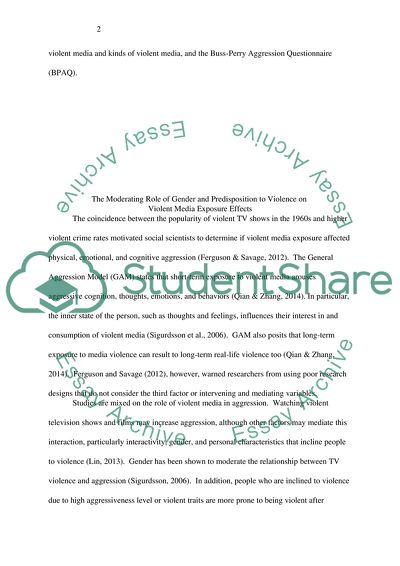Cite this document
(“An experimental research on watching violence and being violent and Paper”, n.d.)
An experimental research on watching violence and being violent and Paper. Retrieved from https://studentshare.org/psychology/1668479-an-experimental-research-on-watching-violence-and-being-violent-and-the-influence-of-gender-and-predisposition-to-violence-on-the-tv-violence-aggression-relationship
An experimental research on watching violence and being violent and Paper. Retrieved from https://studentshare.org/psychology/1668479-an-experimental-research-on-watching-violence-and-being-violent-and-the-influence-of-gender-and-predisposition-to-violence-on-the-tv-violence-aggression-relationship
(An Experimental Research on Watching Violence and Being Violent and Paper)
An Experimental Research on Watching Violence and Being Violent and Paper. https://studentshare.org/psychology/1668479-an-experimental-research-on-watching-violence-and-being-violent-and-the-influence-of-gender-and-predisposition-to-violence-on-the-tv-violence-aggression-relationship.
An Experimental Research on Watching Violence and Being Violent and Paper. https://studentshare.org/psychology/1668479-an-experimental-research-on-watching-violence-and-being-violent-and-the-influence-of-gender-and-predisposition-to-violence-on-the-tv-violence-aggression-relationship.
“An Experimental Research on Watching Violence and Being Violent and Paper”, n.d. https://studentshare.org/psychology/1668479-an-experimental-research-on-watching-violence-and-being-violent-and-the-influence-of-gender-and-predisposition-to-violence-on-the-tv-violence-aggression-relationship.


